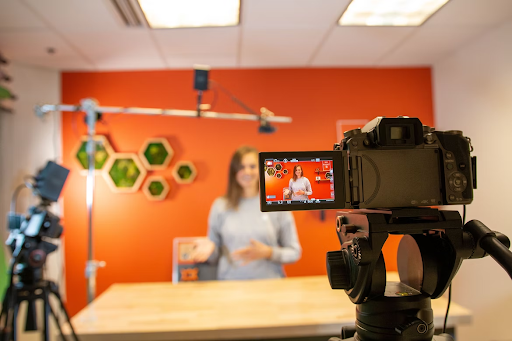In the ever-evolving world of digital marketing, explainer videos have become a valuable tool for simplifying complex ideas. Compelling narratives are at the core of successful explainer videos. Storyboarding, using an online storyboard maker like VistaCreate, can help marketers create videos faster and communicate with the audience more efficiently. Let’s learn in more detail how you can use storyboards in your video marketing campaigns.

Introduction to Storyboarding
Storyboarding is a process that originated in the film industry. It involves creating a visual representation of your video’s narrative flow. It’s like creating a comic strip for your video, where each box represents a different scene or shot.
With its help, marketing teams can significantly enhance the effectiveness of explainer videos by visualizing key scenes and optimizing the narrative flow. By sketching out each scene, you can see how the story unfolds from start to finish, identify any potential problems, and make necessary changes before the production begins.
Storyboards also allow for experimenting with different narrative structures and visual styles. Yoi can play around with various elements, such as camera angles, character positioning, and scene transitions, to see what works best for the story.
Steps to Create an Effective Storyboard for Explainer Videos
Creating a storyboard for your explainer video is an integral part of the video production process. With the advent of online tools, this process has become significantly more streamlined and efficient. Here’s a step-by-step guide on how to create a compelling storyboard using an online tool:
1. Write a Script
Begin by crafting a well-structured script. This script serves as the narrative spine of your storyboard, outlining the key messages and flow of your video. The language used should be clear, engaging, and tailored to resonate with your target audience.
2. Create a Series of Frames
Once your script is polished and ready, it’s time to translate it into visual frames. Log into your chosen online storyboard tool and create a series of frames or boxes. These frames will correspond to different scenes or shots in your video. The quantity of frames you’ll need depends on the length and intricacy of your script.
3. Visualize the Key Scenes
Start populating each frame with visuals that represent the action described in your script. Most online tools come equipped with a library of pre-designed elements like characters, props, and backgrounds. Select those that accurately depict the action and emotions you want to convey in each scene.
4. Insert Dialogue and Direction
Next, add the corresponding dialogue from your script to each frame. Most online tools provide a feature that allows you to add text to each frame. Use this feature to insert dialogue and any other essential details, such as character movements, camera angles, or changes in the setting. This will help guide the production team and ensure everyone understands the vision for each scene.

5. Review and Revise
After filling in all the frames, take a moment to review your storyboard. Does the story flow coherently? Are there scenes that seem unclear or unnecessary? Are any elements not contributing to the overall message?
6. Solicit Feedback
Don’t work in a vacuum. Share your storyboard with others, ideally, those who represent your target audience. Many online tools offer simple sharing options that enable you to gather feedback effortlessly. The insights you gain from this step can help enhance your storyboard, ensuring it resonates with your intended audience.
7. Finalize and Proceed to Production
Once you’ve refined your storyboard based on the feedback received and made the necessary adjustments, you’re ready to move forward. You can now confidently transition to the production phase, where you’ll bring your storyboard to life.
Final Say
Leveraging the power of online storyboard tools can simplify and enhance the process of creating a compelling storyboard. As you navigate through each step, always keep your audience at the forefront of your decisions to ensure your resulting video resonates and drives conversions.
In conclusion, storyboarding is an invaluable tool for crafting compelling narratives for explainer videos. By visualizing key scenes and optimizing the narrative structure, marketers can create engaging explainer videos that resonate with their audience and drive conversions. So, if you’re planning to produce an explainer video, consider starting with a storyboard. It could make all the difference in your video’s success.
The post Explainer Videos that Convert: Using Storyboards to Craft Compelling Narratives appeared first on Under30CEO.
Tim Worstell is a strategic influencer in digital marketing and leadership. As an entrepreneur, he always looks for opportunities to help companies grow and reach their full potential. Building strong relationships with partners has been the key to building Adogy, a profitable growth marketing agency. Adogy is a company that specializes in thought leadership and SEO.
Credit: Source link


Comments are closed.